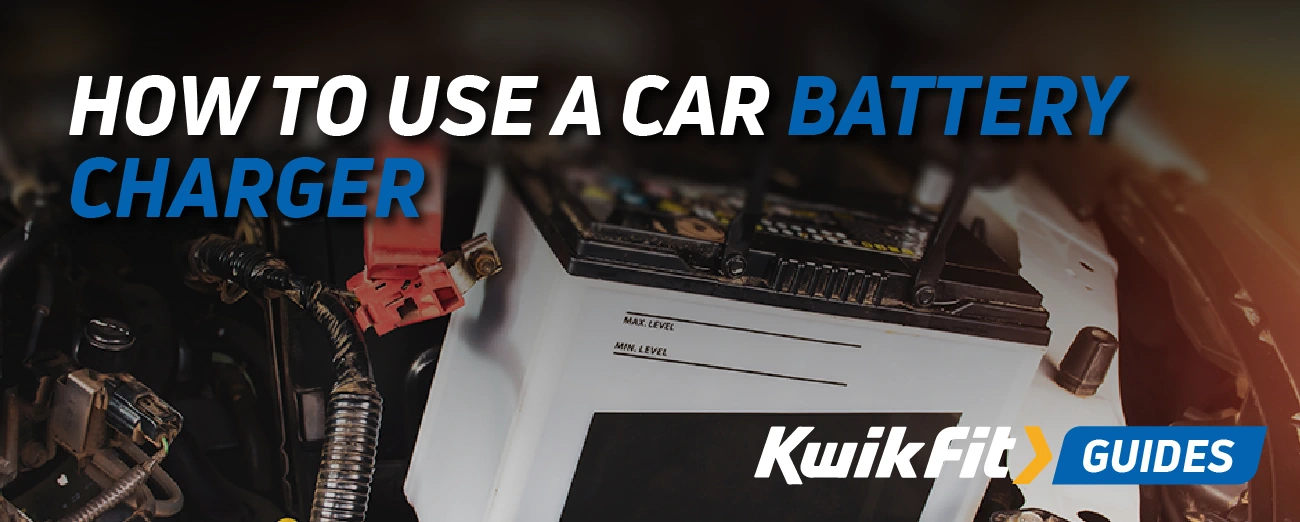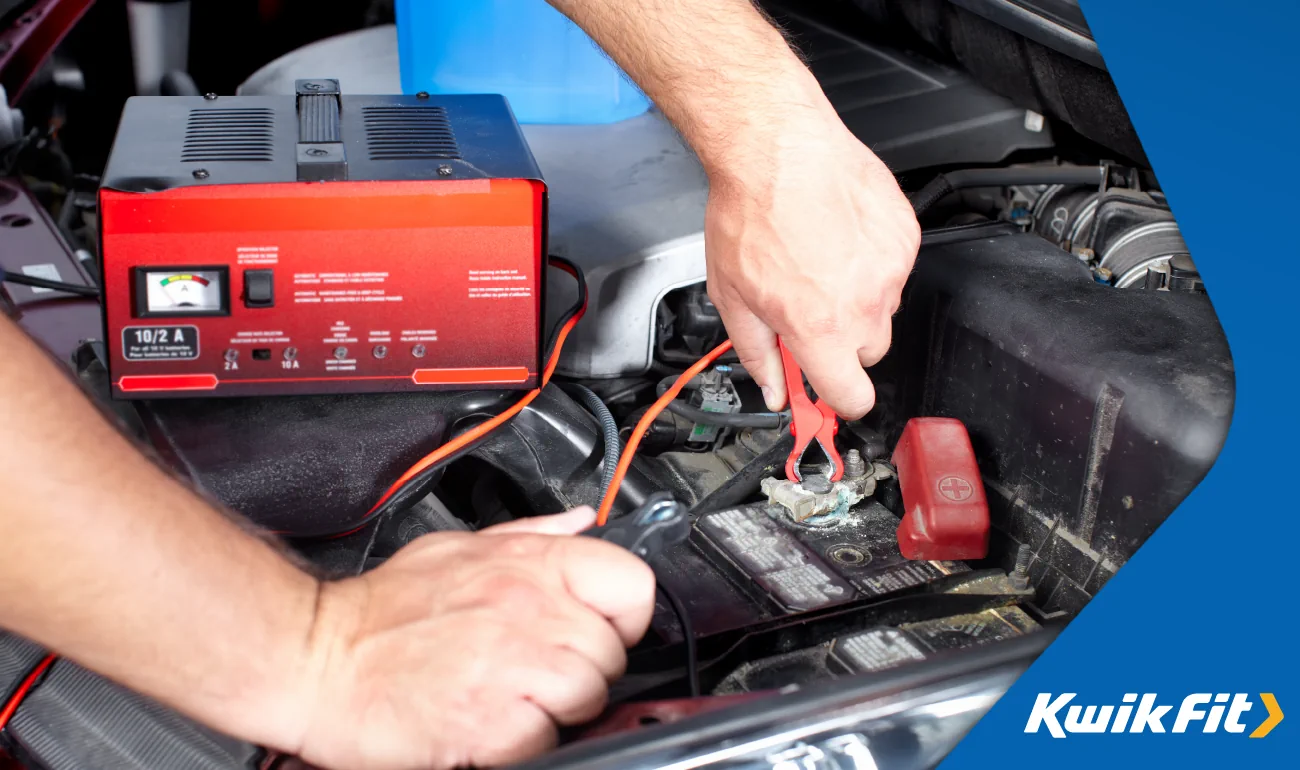How to Use a Car Battery Charger
A 10-step guide to using a car battery charger.

- Check for dirt or corrosion and clean the terminals (if needed) for a safer connection.
- Disconnect the battery by removing the negative (black) lead first, then the positive (red).
- Place the charger away from the battery, as far as the cables allow.
- Attach the charger clamps: positive to positive, negative to negative.
- Plug the charger into a domestic wall socket.
- Turn on the charger and follow its manual for charging times and settings.
- Check if your charger stops automatically once the battery is fully charged.
- Unplug the charger from the wall once the battery is full.
- Always reattach the positive lead first, then the negative.
- Test your battery by starting your car. If issues persist, consult a professional for a battery check-up.
If your car has been sitting on the drive for a while and isnít charging as it should, youíll need to recharge its battery.
Car batteries can go flat for a whole number of reasons, for example forgetting to turn off the headlights or internal lights overnight. Whatever the reason, it is always inconvenient when batteries die.
If you've found yourself with a flat battery in this unfortunate situation, read on to learn how to charge it using a car battery charger.
What Is A Car Battery Charger?
First of all, letís get our heads around the equipment used to charge up your battery: a car battery charger.
This handy piece of kit is essentially a box with positive and negative leads that clip to your carís battery terminals to help replace the lost charge. Car battery chargers are often used in place of the age-old Ďjump startí method as they require less physical exertion and are generally more reliable; however, they donít guarantee an instant restart.
How long do car battery chargers take?
Crucially, the higher the amps of the charger, the faster the battery of your car will charge. But this can only go so far with traditional lead acid batteries Ė as, once you get to a certain current level, thereís a danger of actually boiling the batteries.
If your carís battery is well and truly dead, the car battery charger should be able to get the car to start within two hours. However, in order to fully charge the battery to full capacity, it could take up to ten hours. This can be hastened by driving your vehicle on the motorway after you have got it started initially.
What to check before using a car battery charger
Before using a car battery charger, it is important to check what type of battery your vehicle actually has! For most cars, a conventional charger is ideal. However, some more advanced vehicles may have start/stop technology which requires a different battery type altogether (most commonly an AGM or EFB battery).
Aside from battery type, it is also essential to check the condition of your equipment. Take a look at the lead terminals and the clamps on your battery. If it has been a long time since they were last used, they might be dirty or even corroded. These should be cleaned before use for safety purposes.
For battery maintenance advice, find out more on our battery information page.

How to use the car battery charger
At this point, youíre ready to start charging your carís battery. Properly charging your battery can help extend its lifespan and ensure your vehicle runs smoothly. Follow the steps below to charge your battery safely and effectively:
Safely disconnect the car battery
First, youíll need to disconnect your battery from your car. While it is possible to charge it while it is still in situ, it is far safer without a connection. To do this, remove the negative lead (this is the black one) before the positive (the red) one. If you donít stick to this order, you might end up with a nasty shock if you make contact with the positive terminal. You can connect and disconnect each terminal with a clamp that is loosened by a bolt.
Top tip: when disconnecting your battery, you may need to reset your dashboard and radio settings (along with any other electronics) so get the manuals and security codes prepared for when the job is done.
Connect the charger
Once safely disconnected, youíll need to connect the car battery charger. For this part, move the charger as far away from the battery as the cables can reach and connect the chargerís clamps to the battery terminals. This requires you to match positive to positive first and then negative to negative. After this, plug the charger into a standard domestic wall socket.
Start the charger
Naturally, all thatís left to do at this point is to start the charger. Check the manual for your charger to see how long it will take as well as what you need to do. It might be that your charger is automatically programmed to turn off when the battery is full, but check just in case.
Then, once the battery is charged, repeat the steps above in reverse. That is, unplug the charger, disconnect the clamps, and reconnect the car battery to the vehicle. Remember: this has to be done positive first, negative last!
Problems with your battery?
If you find yourself frequently restarting your vehicle and having to recharge your battery, it may be a sign of an underlying issue that needs attention. A battery that struggles to hold a charge can lead to unexpected breakdowns and leave you stranded when you least expect it.
So, if you suspect any problems with your battery, book in for a free battery health check at your local Kwik Fit today. Or get in touch with our experts who would be happy to answer any questions you might have. Donít forget, we also have our handy blog section of our content where you can read all about our services, and why they are important.






